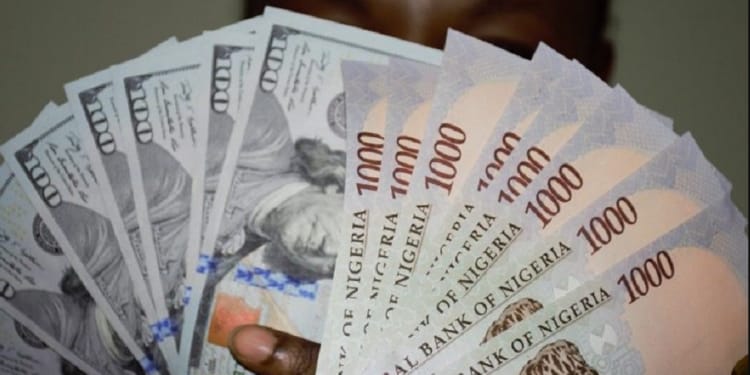The naira recorded its first notable appreciation against the US dollar in over a week, offering a glimmer of hope for the nation’s currency stability efforts. The positive movement in the foreign exchange market has caught the attention of traders, economists, and market watchers alike.
According to data from FMDQ, Nigeria’s foremost securities exchange, the naira strengthened considerably to N1,645.45 per dollar on Wednesday, improving from Tuesday’s rate of N1,689.88. This remarkable shift represents a significant appreciation of N44.43, marking one of the most substantial single-day gains in recent weeks.
The development comes amid increased activity in the foreign exchange market, with the daily FX transaction turnover more than doubling from Tuesday’s figure of $106.44 million to an impressive $236.84 million on Wednesday. This surge in trading volume suggests growing confidence and liquidity in the official market, potentially contributing to the naira’s improved performance.
However, the parallel market, commonly known as the black market, told a slightly different story. The naira experienced a marginal depreciation in this segment, trading at N1,745 against the dollar on Wednesday, compared to N1,740 the previous day. This contrasting movement between the official and parallel markets highlights the ongoing complexities in Nigeria’s foreign exchange ecosystem.
The divergence between official and parallel market rates continues to be a subject of concern for policymakers and market participants. While the official market shows signs of improvement, the persistent gap between both markets indicates underlying structural challenges that still need to be addressed in Nigeria’s foreign exchange management system.
The naira’s appreciation in the official market could be attributed to various factors, including potential increased dollar supply, improved market confidence, and possible interventions by monetary authorities. The significant jump in trading volume suggests more active participation from market players, which typically leads to better price discovery and market efficiency.
This positive development comes at a crucial time for Nigeria’s economy, which has been grappling with currency volatility and inflationary pressures. The strengthening of the naira, if sustained, could help ease some of these pressures and potentially lead to more stable prices for imported goods and services.
For businesses and investors, this movement represents a positive signal, particularly those involved in international trade. A stronger naira typically means reduced costs for imports and more predictable business planning. However, market analysts caution that it’s too early to determine if this appreciation represents a lasting trend or a temporary fluctuation.
The increased trading volume in the official market is particularly noteworthy as it suggests growing confidence in the formal exchange rate mechanism. This could potentially lead to reduced pressure on the parallel market and, over time, help narrow the gap between official and unofficial rates.
The Central Bank of Nigeria’s recent policies and market interventions may have played a role in this positive development. The apex bank has been working to improve liquidity in the official market and implement measures to achieve a more market-determined exchange rate system.
Looking ahead, market observers will be watching closely to see if this appreciation can be sustained and whether it signals the beginning of a more stable period for the naira. The sustainability of this gain will likely depend on various factors, including continued market reforms, improved foreign exchange supply, and overall economic performance.
For the average Nigerian, any sustained appreciation of the naira could translate to lower prices for imported goods and potentially help ease the cost of living pressures that have been a significant concern in recent months.
As Nigeria continues to navigate its complex economic landscape, this positive movement in the currency market provides a hopeful indication of potential stability. However, experts emphasize the need for continued structural reforms and policy consistency to achieve lasting stability in the foreign exchange market.
The coming days and weeks will be crucial in determining whether this appreciation marks the beginning of a new trend or is merely a temporary reprieve in the currency’s recent volatility. Stakeholders across the economic spectrum will be monitoring these developments closely, hoping for sustained improvement in Nigeria’s foreign exchange market dynamics.



